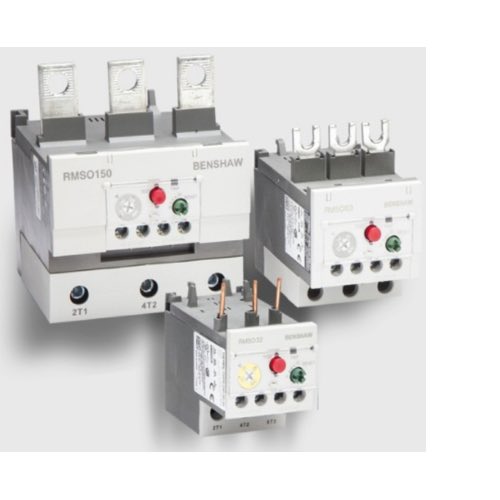Benshaw Starter Overload Relays

Benshaw offers a complete suite of products for motor control and protection. At the core of their motor protection solutions are overload relays designed to prevent damage to three-phase and single-phase motors caused by excessive electrical current. These relays (more correctly referred to as starters with overload protection) serve two functions: They trip the motor circuit when dangerous overcurrents occur and when they don't stop tripping during a nuisance fault, and they also prevent phase loss and overheating of the motor.
Adjustable overload relays from Benshaw allow for fine-tuning the relay to the motor's protection requirements. Both thermal and electronic versions are available, providing application-based flexibility. The relays are straightforward to install and integrate with perfectly with control devices. Convenience and safety are taken care of in both manual and automatic reset options.
FAQs
Q: What are Benshaw starter overload relays used for?
Benshaw starter overload relays protect motors from prolonged overcurrent, overheating, and phase loss by disconnecting power when unsafe conditions are detected.
Q: What types of overload relays does Benshaw offer?
Benshaw offers both thermal and electronic overload relays to accommodate different motor protection requirements and application needs.
Q: How do overload relays work with contactors?
Overload relays are wired in series with contactors. When an overload condition is detected, the relay signals the contactor to open, removing power from the motor.
Q: Are Benshaw overload relays adjustable?
Yes, Benshaw overload relays feature adjustable current settings, allowing them to be matched to the motor’s rated full-load current.
Q: Do Benshaw overload relays support manual and automatic reset?
Yes, many Benshaw overload relays are available with manual or automatic reset options to support different safety and operational requirements.
Why Buy Benshaw Starter Overload Relays from RSP Supply
RSP Supply offers a complete selection of Benshaw starter overload relays to support reliable motor protection in industrial control systems. Our inventory includes thermal and electronic overload solutions designed for seamless integration with Benshaw motor starters and contactors. Customers rely on RSP Supply for knowledgeable technical support, dependable product availability, and motor protection components engineered for long-term performance.

